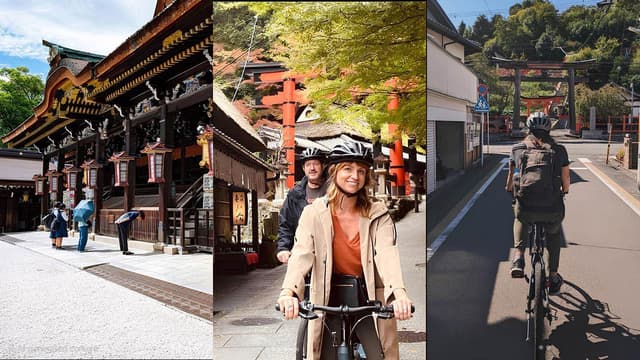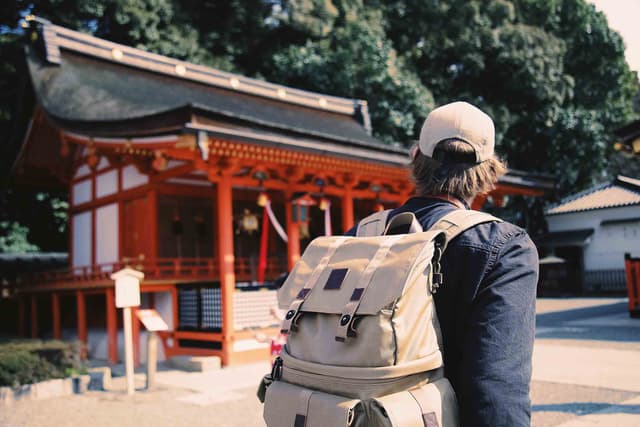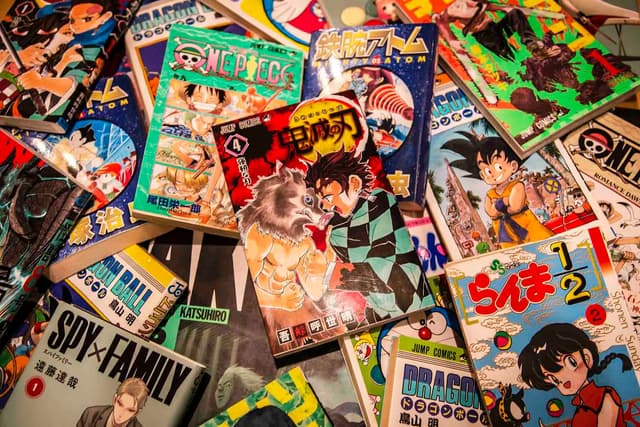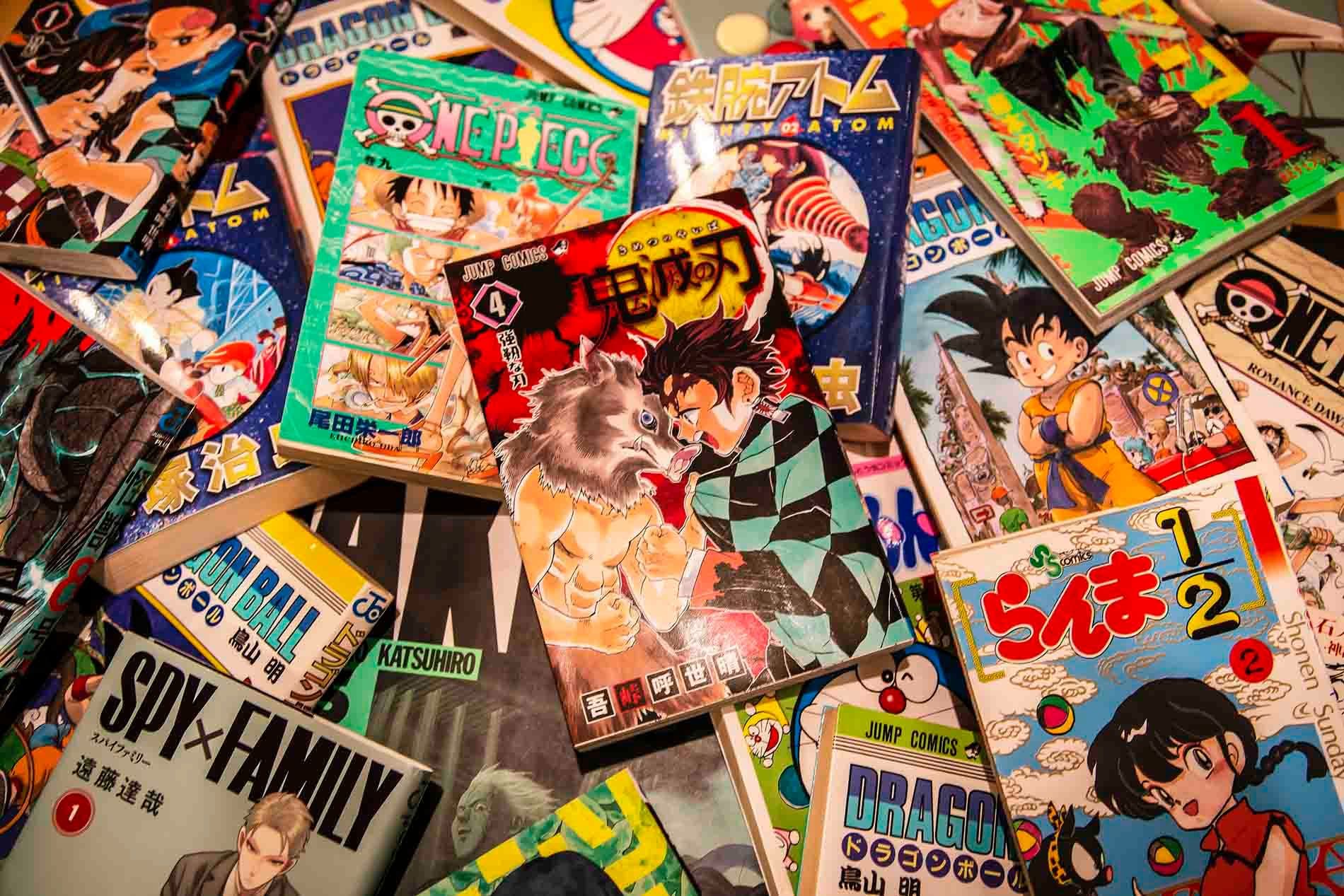

Table of contents:
Personally, I think that Shodenji Temple (正伝寺 - shoden-ji) is the most underrated Kyoto attraction. Kyoto's major temples are known to get overcrowded, which can kill the Kyoto vibe that people are seeking. Few Kyoto temples offer the quiet serenity and historical depth of Shodenji Temple.
Tucked away in the northern hills, this hidden gem remains largely undiscovered by tourists, making it a perfect retreat for those seeking a more intimate connection with Kyoto’s spiritual heritage.
1. Why Visit Kyoto's Hidden Gem: Shodenji Temple?
If you’ve ever imagined Kyoto as a place of peaceful gardens, quiet contemplation, and deep history, Shodenji Temple brings that vision to life. Unlike the bustling crowds at more famous sites, this temple offers a tranquil escape, where you can explore at your own pace.

1.1. What Makes Shodenji Special?
- Underrated and Uncrowded: A true hidden gem, often overlooked by tourists.
- Zen Atmosphere: A perfect spot for reflection, surrounded by nature.
- Historical Significance: Features one of Kyoto’s famous “bloody ceilings”, a haunting reminder of the Battle of Sekigahara.
- Stunning Views: Overlooks Kyoto with a backdrop of Mount Daimonji.

Popular Articles


Tokyo Favorites: 20 Must-Do Experiences for Travelers

Kyoto Bike Tours: Discover the City’s Hidden Gems with Noru

Kyoto 3-Day Itinerary: Best Things to Do for First-Time Visitors

Universal Studios Japan Tickets: Your Guide to Visiting USJ

Find Out What Japan Really Thinks of Foreign Tourists

Manga Explained: Top Recommendations for Beginners
2. The Haunting History of Shoden-ji’s Bloody Ceiling
One of Shodenji Temple’s most unique and features is its “bloody ceiling”, made from floorboards salvaged after the Siege of Fushimi Castle in 1600. During this pivotal conflict, Torii Mototada, a loyal retainer of Tokugawa Ieyasu, led a small garrison in a heroic last stand against overwhelming enemy forces. Refusing to surrender, Mototada and his men fought to the end, and many took their own lives inside the castle.

To honor their sacrifice, the blood-stained floorboards were later repurposed as ceilings in temples across Kyoto, including Shodenji. If you look closely, you can still see handprints, footprints, and smudges, preserved as a solemn tribute to the fallen warriors. Standing beneath these boards is a powerful and reflective experience—one that connects visitors to a dramatic turning point in Japanese history.
👉 Check out another Genko-an Temple, which also has a ceiling of blood

3. How to Get to Shodenji Temple
By Public Transport:
- From Kitaoji Station:
- Take the number 37 City Bus bus to Jinkoin-mae Bus Station.
- Walk for 10 minutes (550 meters) to the temple.
On Foot:
- For a more scenic route, enjoy a one-hour walk from Kitaoji Station, passing through quiet residential streets and forested paths.

4. The Zen Beauty of Shodenji’s Architecture
Though small in scale, Shodenji Temple embodies the essence of Zen Buddhist simplicity. The main pavilion, with its tatami floors and minimalist design, invites visitors to slow down and appreciate the beauty of stillness.
Inside, you’ll find a large Buddha painting and intricately written sutras—so fine that they require a magnifying glass to read. The temple’s bamboo grove and adjacent graveyard add to its quiet charm, offering a peaceful space for contemplation.

5. Shodenji’s Unique Dry Garden
Unlike traditional Zen rock gardens, Shodenji’s dry garden features trimmed azaleas growing from a white gravel base. The plants are arranged in the shichi-go-san (7-5-3) configuration, a Taoist-inspired pattern symbolizing balance and harmony.
Known as the “Delivery of Lion Cubs Crossing the River Garden”, this karesansui (dry landscape garden) is a visual metaphor for a lioness guiding her cubs—an image that encourages introspection and meditation.
6. Why Shodenji Temple is Kyoto’s Best-Kept Secret
In a city overflowing with famous temples, Shodenji remains a quiet sanctuary for those seeking a deeper, more personal experience. Whether you’re a history enthusiast, a nature lover, or simply in search of a peaceful retreat, this hidden gem offers a rare glimpse into Kyoto’s spiritual and historical heart.
If you're planning a trip to Kyoto, i highly recommend that you check out this temple!
Access Information
📍 Shoden-ji Temple
📍 Address:
72 Nishigamo Kitachinjuancho, Kita Ward, Kyoto, 603-8847
🎟 Admission Price:
- Adult: 400 yen
- Junior High Student: 300 yen
- Child: 200 yen
⏰ Opening Hours:
9:00 AM – 5 :00 PM
🚫 Closed Days:
Open all year
🔗 Official Website:
Visit HereFAQs
How do I get to Shodenji Temple?
You can take a bus from Kitaoji Station and get off at Jinkoin-mae. From there, it’s about a 10-minute walk to the temple. If you prefer walking, you can also enjoy a quiet one-hour stroll through the hills. The area around the temple is calm and scenic.
What is the “bloody ceiling” at Shodenji?
The “bloody ceiling” is made from floorboards taken from Fushimi Castle after a famous battle in 1600. These boards still show the blood stains of samurai who died there. They were placed in the temple to honor the fallen warriors. You can see handprints and footprints if you look closely.
When is the best time to visit Shodenji Temple?
Spring and autumn are the best times to visit. In spring, the garden blooms with rhododendron flowers, and in autumn, the trees around the temple turn red and gold. These seasons also bring cooler weather, making the walk to the temple more comfortable. Early morning or weekday visits are usually the most peaceful.
Loading Comments...

James Saunders-Wyndham
I've been immersed in Japanese culture and daily life for over 30 years and am proud to call Japan my home. Originally from Australia, my journey has taken me from teaching at Japanese universities to traveling extensively across the country, uncovering its hidden gems. As a web developer, I built Romancing Japan from the ground up to share these experiences with you. Whether it's the charm of old Kyoto, the pulse of Tokyo, or the tranquility of the countryside, I love helping others discover the magic of Japan—one story at a time.
Popular Articles

Tokyo Favorites: 20 Must-Do Experiences for Travelers

Kyoto Bike Tours: Discover the City’s Hidden Gems with Noru

Kyoto 3-Day Itinerary: Best Things to Do for First-Time Visitors

Universal Studios Japan Tickets: Your Guide to Visiting USJ

Find Out What Japan Really Thinks of Foreign Tourists
